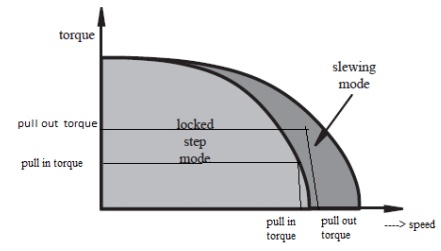Chapter: Mechanical : Mechatronics : Actuation System
Actuation System: Stepper Motor
STEPPER MOTOR
1.Phase.
It refers to the no of independent windings on the stator
e.g two phase motors -used in light duty application
three phase phase motor- used in variable reluctance
2. step angle
The angle through which the rotor rotates for one switching
change for stator coils
3. holding torque
The maximum torque that can be
applied to o powered motor without moving it from rest and causing spindle
motion
4. pull in torque
The maximum torque against which
motor will start or a given pulse rate and reach the synchronism without lose a
step
5.pull out torque
The maximum torque that can be
applied to a motor running at given stepping rate , without losing synchronism
6.pull in rate
The maximum switching rate at
which a loaded motor will remain in synchronism as the switching switching rate
is produced
7.slew rate
The range of switching rates
between pull in and pull out within which the motor runs in synchronism but
cant reverse
characteristics of stepper motor

DC MOTOR .
The major factors in selecting an actuator for mechatronic
applications are
• Precision
• Accuracy
and resolution
• Power
required for actuation
• Cost of
the actuation device
The most popular actuators in mechatronic systems are direct
current (DC) motors. DC motors are electromechanical devices that provide
precise and continuous control of speed over a wide range of operations by
varying the voltage applied to the motor.
The DC motor is the earliest form of electric motor. The
desirable features of DC motors are their high torque, speed control ability
over a wide range, speed-torque characteristics, and usefulness in various
types of control applications.
Related Topics